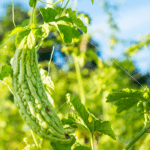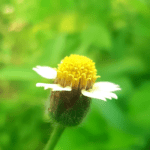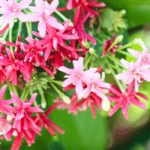Hibiscus Farming 101: A Beginner’s Guide to Starting Your Own Farm in India
Introduction
Hibiscus plant farming has been gaining popularity in India due to its high demand in the domestic market as well as export markets. Hibiscus plants are known for their beautiful flowers and medicinal properties, making it a lucrative crop for farmers. This article aims to provide a comprehensive guide to Hibiscus plant farming in India, including its importance, market demand, and cultivation techniques.
Overview of Hibiscus plant farming in India
Hibiscus plant cultivation has been prevalent in India for a long time, and it is mainly grown in southern states such as Kerala, Tamil Nadu, and Karnataka. The plant requires minimal maintenance and has a high yield, making it a popular crop among small-scale farmers. In recent years, there has been an increase in demand for Hibiscus plants in the Indian market, primarily due to its use in herbal medicines and cosmetic products.
Importance and demand of Hibiscus plants in the Indian market
Hibiscus plants are in high demand in the Indian market due to their medicinal properties and cosmetic use. The plant’s leaves and flowers are used to make tea, which has numerous health benefits, including reducing blood pressure and cholesterol levels. Additionally, Hibiscus flowers are used to make hair oil, which is believed to promote hair growth and reduce dandruff. The plant’s extract is also used in the cosmetic industry, particularly in the production of shampoos and conditioners.
Climate and Soil Requirements for Hibiscus Plant Cultivation
The success of Hibiscus plant farming largely depends on the climate and soil conditions. Here, we will discuss the optimal temperature and humidity levels required for Hibiscus plant growth, as well as the soil composition and nutrient requirements.
Optimal temperature and humidity levels for Hibiscus plant growth
Hibiscus plants require warm temperatures for optimal growth, and the ideal temperature range for the plant is between 20°C to 35°C. The plant can tolerate high humidity levels, but prolonged exposure to high humidity can lead to fungal diseases. Therefore, it is recommended to keep the humidity levels between 50% to 60%. In areas with high humidity, it is essential to ensure proper air circulation to prevent the growth of fungi.
Soil composition and nutrient requirements for Hibiscus plant cultivation
Hibiscus plants require well-drained soil with good fertility. The plant grows well in slightly acidic to neutral soil with a pH range of 6.0 to 7.5. The soil should be rich in organic matter and nutrients, particularly nitrogen, phosphorus, and potassium. The recommended fertilizers for Hibiscus plant cultivation are 20:10:10 or 14:14:14 NPK fertilizers. In addition, organic fertilizers such as cow dung or poultry manure can also be used to improve soil fertility.
In conclusion, Hibiscus plant farming has emerged as a profitable business opportunity in India due to its high demand in the domestic and export markets. However, the success of Hibiscus plant cultivation largely depends on the right climate and soil conditions. Farmers should ensure that the plant is grown in optimal temperature and humidity levels and the soil is rich in nutrients and organic matter. In the next section, we will discuss the planting techniques and practices for Hibiscus plant farming in India.
Varieties of Hibiscus Plants in India
Hibiscus plants have several varieties that are popularly grown in India. Each variety has its own unique features and characteristics and it cultivated for aesthetic, medicinal, and nutritional properties.
Common Varieties of Hibiscus Plants in India:
Chinese Hibiscus (Hibiscus rosa-sinensis)
- Known for large, showy flowers in a range of colors
- Requires regular pruning to maintain shape and size
- Perennial plant
- Requires regular pruning
Shoeblackplant (Hibiscus mutabilis)
- Has large, double flowers that change color as they age
- Deciduous shrub that sheds leaves during winter and produces new growth in spring
- Deciduous shrub
- Changes color as flowers age
Hibiscus cannabinus (Kenaf)
- Grown for its stem and used in the production of paper, textiles, and cordage
- Grown for its stem
- Used in production of paper, textiles, and cordage
Hibiscus sabdariffa (Roselle)
- Grown for its edible calyces which are used to make a tangy drink
- High in vitamin C and antioxidants
- Edible calyces
- High in vitamin C and antioxidants
Uses of Hibiscus Plants in India
- Cultivated for aesthetic appeal
- Used for medicinal and nutritional properties
- Hibiscus sabdariffa calyces used to make a tangy drink
Preparation and Planting of Hibiscus Plants
Proper preparation and planting techniques are crucial for the successful cultivation of Hibiscus plants. Here are some guidelines to follow:
Selection of Hibiscus plant seedlings: When selecting Hibiscus plant seedlings, look for ones that have healthy green leaves and a well-developed root system. Avoid seedlings that have yellow or wilted leaves, as they may not be healthy.
Soil preparation and fertilization techniques: Hibiscus plants require well-draining soil that is rich in organic matter. Before planting, prepare the soil by adding compost or well-rotted manure to improve soil fertility and texture. It is also important to fertilize the soil with a balanced fertilizer that is rich in nitrogen, phosphorus, and potassium.
Planting and spacing guidelines for Hibiscus plants: Hibiscus plants should be planted in a location that receives full sun or partial shade. The planting hole should be dug twice the size of the root ball, and the plant should be placed at the same depth as it was in the nursery pot. Space the plants at least 3 feet apart to allow for proper air circulation and growth.
Proper preparation and planting techniques are important for the successful cultivation of Hibiscus plants. By following the guidelines outlined above, you can ensure that your Hibiscus plants grow healthy and produce beautiful blooms.
Irrigation and Nutrient Management for Hibiscus Plant Cultivation
Watering schedules and techniques for Hibiscus plants
Hibiscus plants require consistent moisture for healthy growth and blooming. The amount of water required depends on the temperature, humidity, and soil moisture content. Overwatering can lead to root rot, while underwatering can cause wilting and stunt plant growth. It is recommended to water hibiscus plants deeply but infrequently, allowing the soil to dry out slightly between waterings. Mulching around the plant can help retain soil moisture and suppress weed growth.
Application of fertilizers and other nutrients for optimal plant growth
Fertilizer application is essential for the growth and flowering of hibiscus plants. A balanced fertilizer with a higher ratio of phosphorus (P) and potassium (K) is recommended. Nitrogen (N) is necessary for foliage growth but can inhibit flowering. The application of fertilizers should be done in a controlled and timely manner to prevent overfertilization, which can cause salt buildup and burn the plant’s roots.
In addition to fertilizers, other soil amendments like compost, well-rotted manure, and vermicompost can improve soil fertility and texture. Foliar feeding, or the application of nutrients directly to the leaves, can also benefit the plant’s growth and health.
Proper irrigation and nutrient management are crucial for the successful cultivation of hibiscus plants. Maintaining a consistent watering schedule and using a balanced fertilizer with a higher ratio of P and K can improve plant growth and flowering. Careful application of fertilizers and other soil amendments can prevent overfertilization and salt buildup.
Pest and Disease Management in Hibiscus Plants
Common pests and diseases affecting Hibiscus plants in India
Like all plants, hibiscus is susceptible to various pests and diseases that can affect its growth and flowering. Some common pests include aphids, mites, scales, and whiteflies, while diseases like leaf spot, powdery mildew, and rust can also occur. Prevention is key in pest and disease management, and it is crucial to maintain good cultural practices like proper irrigation, fertilization, and pruning to prevent stress and promote plant health.
Preventive measures and management techniques for pest and disease control
In case of pest or disease infestation, early detection and prompt treatment are important. Insecticidal soaps, horticultural oils, and neem oil are effective and safe options for controlling pests, while fungicides can be used to treat fungal diseases. It is important to follow the label instructions and use the appropriate dosage to avoid damaging the plant or harming beneficial insects.
Biological control, or the use of natural enemies like predators or parasitoids, can also be an effective and sustainable method for pest management. For instance, ladybugs and lacewings are natural predators of aphids and can help control their populations. Additionally, crop rotation and sanitation practices like removing diseased leaves and debris can help prevent the spread of pests and diseases.
Pest and disease management is an important aspect of hibiscus plant cultivation. Prevention through good cultural practices is key, but in case of infestation, early detection and prompt treatment are necessary. Various control methods like insecticidal soaps, fungicides, and biological control can help manage pests and diseases effectively and sustainably.
Harvesting and Post-Harvest Management of Hibiscus Plants
Hibiscus flowers are delicate and require careful handling during harvesting and post-harvest management to preserve their quality. Here are some guidelines for optimal harvesting and post-harvest management of Hibiscus plants:
Optimal time for Hibiscus plant harvesting:
Hibiscus flowers are generally harvested when the petals are fully developed, but not yet wilted. The best time to harvest the flowers is during the early morning hours when the dew has dried, as the flowers are at their freshest at this time. The harvesting process involves carefully cutting the flowers with sharp shears to prevent any damage to the plant.
Techniques for harvesting and handling Hibiscus flowers:
After harvesting, the Hibiscus flowers should be placed in a clean container with a damp cloth or paper towel to prevent them from wilting. The flowers should be handled with care to prevent any bruising or damage. It is important to remove any leaves or debris from the flowers to maintain their freshness.
Storage and transportation guidelines for Hibiscus flowers:
Hibiscus flowers are highly perishable and should be stored and transported under controlled conditions. They should be kept in a cool, dry place away from direct sunlight and stored in airtight containers to prevent moisture loss. Proper packaging and labeling are important during transportation to ensure the flowers reach their destination in good condition.
Marketing and Sales of Hibiscus Flowers in India
Overview of Hibiscus flower market in India:
Hibiscus flowers are popular in India, where they are used for religious, medicinal, and ornamental purposes. The demand for Hibiscus flowers is growing due to their various health benefits and unique aesthetic appeal. Here’s an overview of Hibiscus flower market in India and some tips for effective marketing:
The Hibiscus flower market in India is largely driven by the demand for fresh flowers for puja (worship) and other religious ceremonies. Apart from that, the flowers are used in the cosmetic and pharmaceutical industries for their natural healing properties. The market is largely unorganized, with small-scale farmers and traders dominating the sector.
Opportunities and challenges in Hibiscus flower sales:
While there is a growing demand for Hibiscus flowers, there are also several challenges facing the industry. One of the main challenges is the lack of standardization in quality and pricing, which makes it difficult for buyers to make informed decisions. The fragmented nature of the market also makes it challenging to establish supply chains and distribution networks.
Tips for effective Hibiscus flower marketing:
To overcome the challenges in the market, it is important for farmers and traders to focus on quality and consistency in their products. Building relationships with buyers and establishing a strong brand presence can also help to increase sales. Using social media and other digital marketing tools can help to reach a wider audience and increase visibility in the market. It is also important to participate in trade fairs and exhibitions to showcase the products and connect with potential buyers.
Case Study: Successful Hibiscus Plant Farming in India
Story of a successful Hibiscus plant farmer in India –
In India, there are numerous farmers who have successfully cultivated hibiscus plants and achieved great success. One such farmer is Mr. Ramesh, who has been involved in hibiscus cultivation for over a decade. Mr. Ramesh is a farmer from the southern state of Tamil Nadu, where hibiscus farming has gained significant popularity over the years.
Mr. Ramesh started his hibiscus farming journey with a small plot of land, where he experimented with different varieties of hibiscus plants. He closely observed the plants’ growth and behavior and developed his unique cultivation techniques. He started with just a few plants but gradually increased the number of plants as he gained more experience and knowledge about the plant’s requirements.
Mr. Ramesh follows a strict irrigation schedule and uses a drip irrigation system to provide water to his plants. He also ensures that the plants receive sufficient nutrients by regularly adding organic fertilizers to the soil. He also practices intercropping by growing leguminous crops like beans and peas alongside hibiscus plants. This method helps to improve soil fertility and reduce pest and disease infestation.
Mr. Ramesh’s hard work and dedication paid off, and he now has a successful hibiscus farm, which yields high-quality flowers year-round. He sells his flowers to local markets and flower wholesalers, earning a good profit.
Best practices and techniques followed by the farmer –
Mr. Ramesh’s success story highlights some best practices and techniques that can be followed by aspiring hibiscus farmers. Firstly, it is essential to select the right variety of hibiscus plants that are suitable for the local climate and soil conditions. Secondly, regular irrigation and nutrient management are crucial for the plant’s growth and yield. Thirdly, pest and disease management should be a top priority, and farmers should use natural and organic methods to control pests and diseases. Fourthly, intercropping can be an effective way to increase soil fertility and reduce pest and disease infestation. Lastly, farmers should focus on post-harvest management to maintain the quality of the flowers and increase their shelf life.
Conclusion
In conclusion, Hibiscus plant farming is an increasingly profitable and sustainable option for farmers in India. With proper knowledge and implementation of the best practices, farmers can achieve significant yield and income from Hibiscus cultivation.
Recap of important points discussed in the article
In this article, we have covered several important aspects of Hibiscus plant farming, including the ideal climate and soil conditions for Hibiscus cultivation, the different varieties of Hibiscus plants, the process of propagation and planting, and the crucial aspects of irrigation, nutrient management, pest and disease control, harvesting, and post-harvest management.
We also highlighted the challenges and opportunities in the Hibiscus flower market in India, as well as the success story of a farmer who has achieved great success in Hibiscus plant farming by following the best practices and techniques.
Future prospects and opportunities in Hibiscus plant farming in India
Moving forward, the future prospects of Hibiscus plant farming in India look promising, with an increasing demand for Hibiscus flowers in various industries such as cosmetics, food, and pharmaceuticals. Farmers can also explore the export potential of Hibiscus flowers to other countries, which can further boost their income.
In conclusion, we highly recommend aspiring farmers to consider Hibiscus plant farming as a viable and profitable option, and to constantly stay updated with the latest best practices and techniques to achieve maximum yield and success. For more information and resources on Hibiscus plant farming, please visit www.shehrikisaan.com.
In summary, Hibiscus plant farming in India has great potential for growth and prosperity, and by following the right practices and techniques, farmers can achieve significant success and contribute to the country’s economy.







